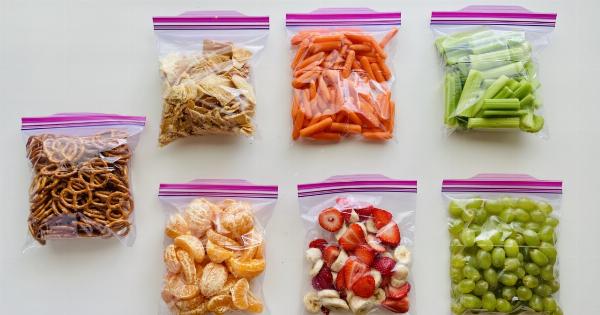In every household around the world, bread and spaghetti are staples that are consumed on a regular basis.
However, have you ever wondered why these food items eventually go bad? In this article, we will explore the various factors that contribute to the deterioration of bread and spaghetti and how you can prolong their shelf life.
Understanding Bread Spoilage
Bread is a common food item that is made from a combination of flour, yeast, water, salt, and other ingredients. It is a perishable item, which means that it will eventually go bad if not stored properly.
The main cause of bread spoilage is the growth of mold. Mold spores are naturally present in the environment, and when they come into contact with bread, they can germinate and grow.
The presence of moisture and warmth accelerates the growth of mold, which is why bread stored in humid environments tends to spoil faster.
Exposure to air is another factor that can contribute to bread spoilage. Oxygen in the air reacts with the fats in bread, leading to a process called oxidation. This process causes the bread to become stale and develop an off-flavor.
Factors Affecting Spaghetti Shelf Life
Spaghetti, a type of pasta made from wheat flour and water, also has a limited shelf life. The main factor contributing to spaghetti spoilage is the presence of moisture.
Just like bread, spaghetti can become a breeding ground for mold if it is exposed to excessive moisture.
The packaging of spaghetti plays a crucial role in preventing spoilage. It is important to store spaghetti in airtight containers or packaging to minimize exposure to air and moisture. Any punctures or openings in the packaging can accelerate spoilage.
How to Extend the Shelf Life of Bread and Spaghetti
Now that we understand the factors that contribute to the spoilage of bread and spaghetti, let’s explore some strategies to extend their shelf life:.
1. Proper Storage
Both bread and spaghetti should be stored in cool, dry, and dark places. Avoid keeping them in humid environments such as the kitchen countertop or near the stove. Instead, store them in airtight containers or in the refrigerator.
2. Freezing
If you want to prolong the shelf life of bread and spaghetti, freezing is an excellent option. Bread can be sliced and stored in freezer bags, while spaghetti can be stored in freezer-safe containers.
Just make sure to thaw them properly before consumption.
3. Airtight Containers
Invest in good quality airtight containers to store both bread and spaghetti. These containers help to keep moisture and air out, slowing down the spoilage process.
4. Avoid Touching with Hands
When handling bread and spaghetti, it is crucial to avoid touching them directly with your hands. The natural oils on our hands can introduce bacteria and accelerate spoilage. Use clean utensils or gloves when handling these food items.
5. Store in the Right Temperature
Ensure that the storage temperature is appropriate for both bread and spaghetti. Bread should be stored at room temperature or in the refrigerator, while spaghetti should be kept in a cool pantry or cupboard away from heat sources.
6. Regularly Check for Mold
Keep an eye on your bread and spaghetti for any signs of mold. If you spot any mold growth, discard the affected portions immediately, as mold can spread rapidly.
7. Use-by Dates
Always check the use-by dates on the packaging of bread and spaghetti before purchasing. Consuming them beyond their expiration dates may lead to unpleasant experiences or even health risks.
8. Avoid Moisture Exposure
Prevent moisture exposure to bread and spaghetti by keeping them away from the sink, avoiding condensation in storage containers, and not storing them in plastic bags that may accumulate moisture.
9. Consider Bread Storage Accessories
There are various bread storage accessories available in the market, such as bread boxes or bags with ventilation. These accessories can help regulate air circulation and prevent mold growth.
10. Proper Handling of Leftovers
If you have leftover bread or spaghetti, make sure to store them properly according to the above guidelines. Leftovers can spoil faster if they are not stored correctly.
Conclusion
In conclusion, the spoiling of bread and spaghetti is primarily caused by factors such as mold growth, exposure to air, and moisture.
By understanding these factors and following the tips mentioned, you can effectively extend the shelf life of these food items and reduce waste.





























